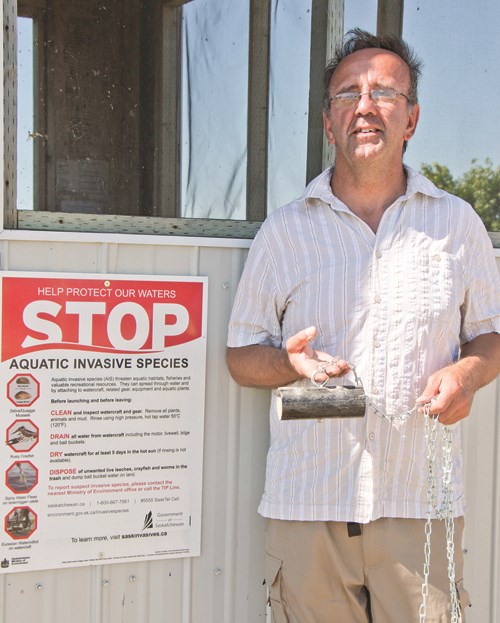Invasive species are a danger to ecosystems that they are introduced into. They disrupt and change their surroundings. A major concern, which has developed is the spread of zebra and quagga mussels across Canada.
“While monitoring done to date has not found zebra and quagga mussels in the province, we continue to work to increase awareness on this issue,” Environment Minister Herb Cox said. “Our government’s focus in 2016 and beyond will include increased watercraft inspections, decontaminating high-risk watercraft found entering the province and additional education and awareness efforts to help protect our fish populations and aquatic habitats.”
These invasive aquatic species were first transported to North America via the bilge water of ships which had been in the Baltic Sea. Within Canada the mussels grew quickly becoming infestations throughout the St. Lawrence River and the Great Lakes approximately 20 years ago.
The zebra and quagga mussels have since spread further with Lake Winnipeg and several reservoirs across the United States being affected.
These infestations affect fish spawning habitats and can alter ecosystems irrevocably if introduced into them. A mussel of approximately the same size as the tip of one’s finger can filter up to one litre of water per day, feeding on small aquatic organisms. These are the same organisms fish require to survive, thus the invasive species can challenge native fish for food supply and spawning habitat.
Substrate samplers have been set up within the Upper Souris Watershed to monitor for mussels.
This year, a new initiative is also underway, the Upper Souris Watershed Authority will utilize veliger monitoring with plankton nets within all of the major water bodies within the watershed. These samples will be taken at strategic locations and will be sent to the Ministry of Environment for testing.
“The provincial government is undertaking several initiatives to prevent invasive species from entering the province,” the government stated in a press release earlier this year. “This includes conducting roadside watercraft inspections and check-stops with a focus on the Manitoba and U.S. borders, as well as high-risk water bodies such as those that host organized watercraft events.”
“In addition, the ministry’s mobile decontamination units will be used in cases where invasive species are discovered on watercraft. The province supports several other initiatives that raise awareness about aquatic invasive species and the importance of prevention through the CLEAN, DRAIN, DRY Your Boat awareness program.”
David Pattyson with the Upper Souris Watershed Association has previously told The Observer, “At their smallest stage they’re almost invisible to the naked eye. They’re most likely to hitch a ride on a boat and a lot of times mussel infestations can first be seen at the boat launch docks.”
“Any equipment that has been in the water and comes out with a sandpaper feel is a good indicator or if anything that looks like a mussel is attached then that’s probably what it is. The other species we have in Saskatchewan that have a hard shell don’t attach. If people suspect these infestations call the Saskatchewan Environment’s tip line because a Conservation Officer won’t be upset if they have to come out for a false call.”
The mussels can survive in standing water beyond 30 days, which makes it imperative to properly clean, drain, and dry your water equipment. This includes: the watercraft, trailer, and all related items before leaving the boat launch. Inspect drain holes, transducers, motors, propellers, as well as the trailer and vehicle. Then wash, scrub, and rinse everything in hot tap water.
Also remember to drain any water still in the motor, live wells, the bilge, ballast tanks, etc… and flush these areas with hot tap water. Leave the plugs out during transportation and storage.
Ensure you dry your watercraft and any equipment or gear used, including leaving all compartments open.




